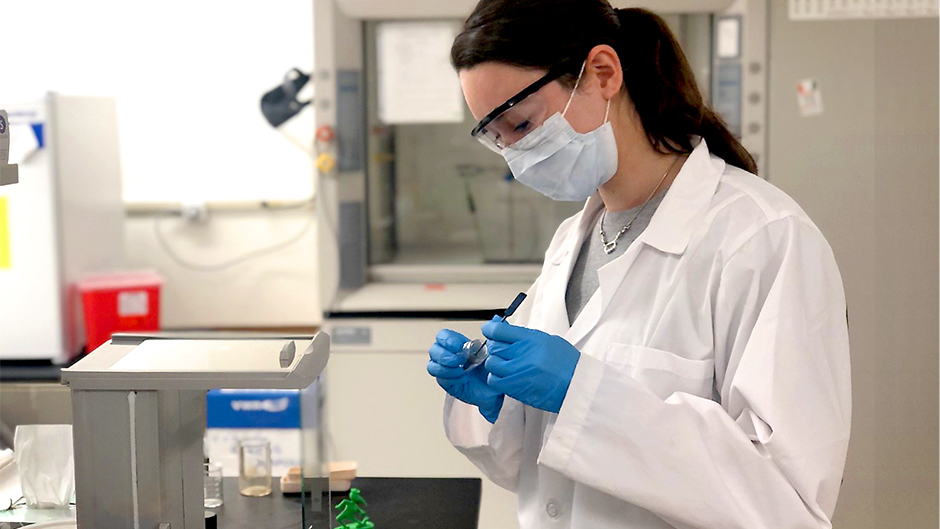Isadora Smith was only 5 years old when she started watching episodes of “How It’s Made,” the popular Canadian-produced television series that shows how everything from crayons to car engines and pencils to pistons are manufactured.
Her precocious television-viewing habits bewildered her mother and father. But to let Smith tell it, she was just getting a head start on a still-fledgling academic career in biomedical engineering that has already seen her code a device that helps the blind navigate passageways and conduct research that could one day lead to a breakthrough in the treatment of neurodegenerative diseases.
“I’ve always wanted to be at the forefront of discovery and technology that will help people live longer and make their lives easier,” said Smith, a junior in the University of Miami College of Engineering and the recent recipient of a National Science Foundation Research Experiences for Undergraduates award.
Working out of the lab of Sakhrat Khizroev, professor of electrical and computer engineering, Smith is helping to create the first wireless brain-machine interface, using magnetoelectric nanoparticles to stimulate neurons deep in the brain and potentially repair abnormal neural activity responsible for Alzheimer’s, Parkinson’s, and other nervous system disorders.
“When the neurons are stimulated, they emit a signal that can then be picked up by a computer, allowing for communication between the two,” Smith explained.
She is part of a team whose work could not only lead to advancements in precision medicine and neuroimaging but also open a pathway to understanding the computing architecture of the body’s command center, said Khizroev, principal investigator of the NSF-funded Magnetoelectric Nanodevices for Wireless Repair of Neural Circuits Deep in the Brain.
“We were very fortunate to have Isadora join our laboratory about a year ago,” Khizroev said. “She’s a very research-driven and talented young scientist who has become so experienced and skillful that I often forget she is the only undergraduate in a lab full of Ph.D. students.”
The daughter of college professors, Smith has been displaying her bent for science and math ever since she was that little girl who would sit in front the television in her living room to watch “How It’s Made.” When she was a high school student at MAST Academy on Virginia Key, she took a solar-engineering course, building solar-powered ovens and miniature cars. She also designed and built an underwater ROV, or remotely operated vehicle.
When she’s not conducting research, she takes on a challenge of a different sort—rock climbing. The sport, she said, is not all that different mentally from scientific investigation.
“In rock climbing, when you ascend a rock face, the route you take is not always apparent. It’s often a puzzle, and you have to think logically to make a successful ascent,” said Smith, president of the University of Miami Rock Climbing Club. “The same holds true in research. You have a problem, and the solution seldom presents itself. So, you have to use logic and critical thinking to solve it. And that’s what I like about science.”

